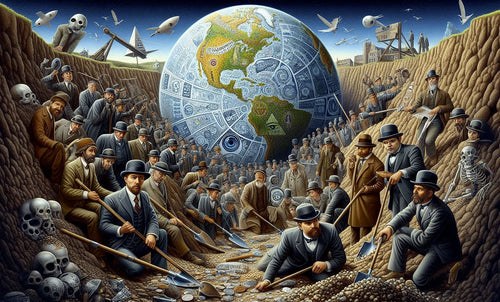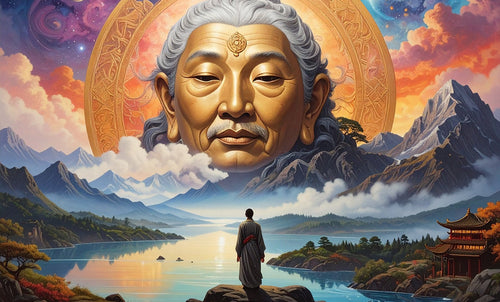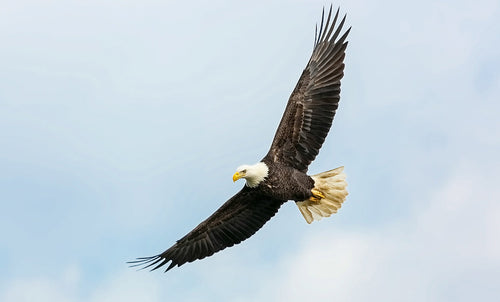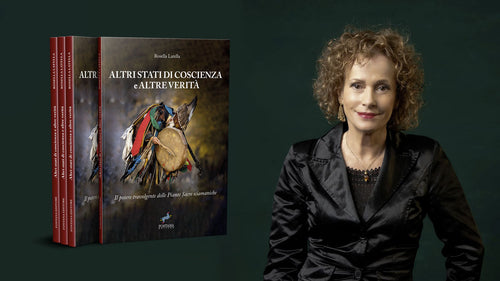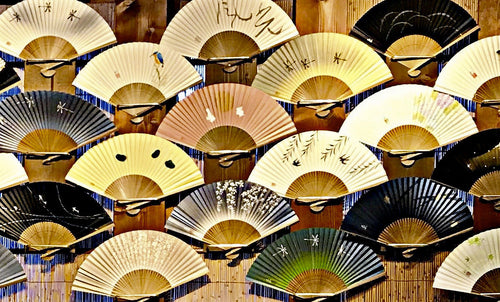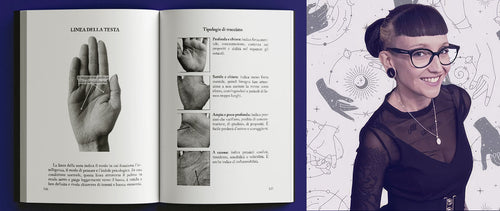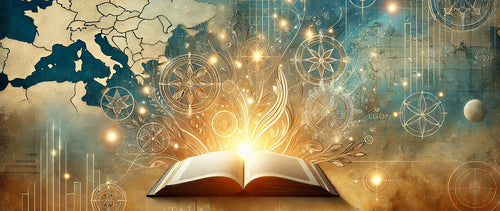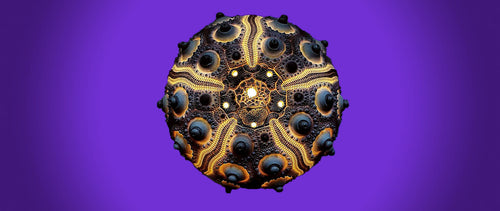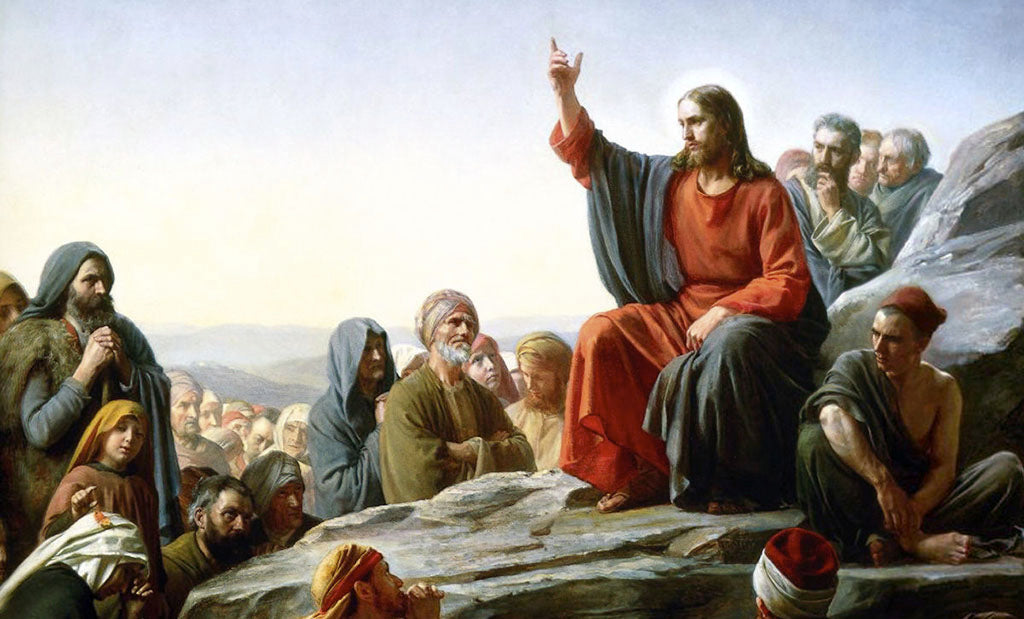
Christian Gnosis and triple baptism
Antonio BonifacioSome considerations on triple initiatory baptism from Nazareth
Despite the great changes involving the doctrinal structures of Catholicism, in our contemporaneity, whose Pastoral Care even seems to be responsible for influencing and adapting the Doctrine to the contemporary world (see, in this regard, the recent statement by Card. Reinhard Marx who argues that the Catechism is not written in stone and therefore can change due to the changes in contemporary society) the idea of a gnosis and of a Christian esotericism arouse, in the ecclesiastical hierarchies, the same disgusted reprobation that it generated among heresiologists about sixteen centuries ago.
Yet, in the reasoned and documented opinion of the writer, gnosis, rather than a body foreign to Christianity, is its in itself, its presence being triggered at its origin and it, consequently, would emanate from Christ himself, distinguishing himself in this from the complex of Gnosticism which would be its subsequent epiphenomenon.
In this very brief intervention, preparatory to a much larger study, the intention is to show how the Gnostic connotation of Christianity originally characterized it, as documented by the sources themselves. The authors who talk about it are often ecclesiastics, who have not shown the slightest hesitation in using the phrasebook of the pagan mysteries, when they had to illustrate the various stages of the essential Christian rite for the attainment of "Knowledge", i.e. the triple baptism, divided into successive stages called Baptism of Fire, Water and Holy Spirit in the Order.
This complex rite was practiced in Nazareth, the village where he not only lived Jesus and his family, but also his subsequent relatives and for three centuries jealously preserving the verbal legacy left by Christ himself and consequently the methods of worship relating to his teachings.
Let's go in order on the subject by getting help in our exposition from the contributions of qualified authors who have expressed themselves on the themes just anticipated with reasoned expertise.
Regarding this possible "original esoteric Christianity", the researcher Claudio Lanzi writes:
The substantial 'hermetic' difference between Christianity and other traditions consists in the fact that while the official liturgy and sacramental rituals have progressively detached themselves from the initiatory modalities of proto-Christianity, the understanding of occult rituals has always really been reserved for a few initiates and they are been transmitted regularly precisely because they are concealed in the immense mystery heritage, visible to all but understandable to very few. (Claudio Lanzi: Hermeticism and mysticism p. 9)
This hidden heritage of which the researcher speaks is probably traceable in several ribs of Jesus' teaching. One of those which today are particularly investigated again is that of Essen and Father Mario Canciani insisted a lot on the original contribution of ecumenism, condensing the results of his research in the volume specifically dedicated to the theme of the Eucharistic meal which bears the significant title The Last Supper of the Essenes. He writes:
“Following this, the election of the first Christian bishop of non-Jewish origin took place on Zion. The balance between the Church of the circumcised Judeo Christians and the Christians of Greek origin then began to unbalance, which will then accentuate with the coming of the Byzantines. It is easier then to think how the Judeo-Christian Church ended up like a dry branch, which until the fourth century represented a thorn in the side of the Church which instead had universalist projects” (M. Canciani:1995, 47).
The thesis of Father Canciani, which substantially takes up the previous one of Father Pixner who is almost the discoverer of the Essene quarter in Jerusalem of which the Holy Zion is a part, is that the last Easter Supper of Christ was an Essene dinner (vegetarian therefore) . This means that another impeccable scholar of the subject, namely Vittoria Laura Guidetti, has inclined to define this primitive Jewish Christianity with a new indication, namely Essene-Christianity, on the basis of her studies on James (the brother of Jesus), the a man who is probably indicated in the Gospels with the "jug bearer".
These new contributions only confirm the opinion that Henry Corbin clearly expressed on the subject, which now passed half a century ago, which, in fact, writes:
"In the common reference to Essene ancestry we must read the aspiration to a Christianity that disappeared too soon from external history, an aspiration that cannot capitulate in the face of its violence". (H. Corbin: 1983 p. 229).
To this categorical affirmation we can combine this subsequent one by the same authoritative which, as we can clearly see, agrees with what Father Canciani wrote about the progressive removal of the original Gesuana delivery to Giacomo the just "saint already in his mother's womb" first bishop of the mother church of Jerusalem whose existence was suffocated by the pincers of Orthodox Judaism and Pauline Christianity. Read the passage:
"But meanwhile another Christianity begins to conquer the world, a Christianity far removed from the doctrine and gnosis professed by the first apostolic community of Jerusalem founded by those who were the companions of Christ; so distant that this doctrine was described and considered by the Fathers of Church as an “abominable heresy” (H. Corbin:1983, 230).
This teaching, as will be seen a little further on, constitutes an initiatory deposit and this affirmation is directly confirmed by Father Emmanuele Testa, author of a powerful and unsurpassed study on Judeo Christianity (published in 1961 and reprinted in 2004) who presents this of his " immense effort", in these terms which, more than any other, promoted the birth of the writing under development and of which this intervention represents in synopsis: "The initiation rites of the living and the dead (among the Jewish Christians ed.) were intended to facilitate the smooth journey of the mystic or the deceased from the earth or grave into the presence of God, through the three cosmic regions: the grave, the air, and the seven heavens found in the Chenoma and the Pleroma” (a animic itinerary that was defined as the "good" mystical journey).
The potential of this phrase is, in the opinion of the writer, truly enormous since it is made explicit that Christian initiation (and Father Testa alludes to the triple baptism of which he will speak abundantly in his text as a perspicuous element of initiation) consisted in a "journey" in the aerial regions and "beyond", according to a consolidated initiatory pattern that is ubiquitously widespread. This journey, in coherent similarities to the otherworldly explorations described in the various Egyptian Books of the Dead, which we are not going to enumerate here, whose initiatory character is valid precisely for both the living and the dead (this is recognized by many scholars), could to be fulfilled consciously even after death, directing the soul, ritually made steady and not sagging, towards "salvation" (however you want to understand the term) in contradiction with what the Most New are expressing today on this issue.
That this initiation was a form of gnosis (knowledge in the initiatory sense of the term, not the common one pertaining to the level of erudition) Father Testa himself tells us with these important words:
“Christian theology, from the first to the fourth century, loved to manifest its faith, rather than with theological and metaphysical formulas (as Greek-Latin will do instead) with a symbolic system of signs, almost a projection of the believed faith. This system aroused in the hearts of the faithful a pronounced tendency to a deeper GNOSIS, to a heartfelt love of the mystery". etc.
This is just one of the many examples that can make us understand how, alongside the redemptive sacrifice (in any case not mentioned in the evangelical letter of James), Christ brought knowledge of the Mystery of the Kingdom, understood as the realization of an eschatology in the present and not therefore understood only as a deferred salvation.
Testa, for example, speaking of a specific category of crosses - the "star-crosses" exactly - one of the innumerable typologies of crosses present in Judean Christianity writes that, both the first and the second coming of the Messiah, was (and will be) anticipated by the appearance of a certain star in the sky marked by a special brilliance and is expressed thus in relation to the expected new prodigy: "It also identifies itself with the glorious cross that blossomed from the messiah seed, according to Is.11,1 to bring to the dark world of sin, the light of true gnosis" (E. Testa: 282-283), This concept is repeated in the interpretation of the passage from the Protoevangelium of James which speaks of the light of the star of Magi; “because the comet symbolizes the light of the Messiah which dispels the darkness; it is none other than true gnosis” (ibidem 285). We conclude with another passage taken from the Testament of Levi "His star will rise from the sky, like that of a king, radiating the light of gnosis, like the sun the day...".
In summary it is evident that the "true gnosis" was and will be brought again by Christ himself and, moreover, it could not be otherwise within the ambit of this Tradition which is parallel to that contained in other "ways" and opened by other "Masters".
So writes L.M.A. Purple by the way: "The purely Gnostic way established by Pythagoras Apollo does not differ essentially from the purely pneumatic way established by Jesus Christ nor from that established by Buddha Sakyamuni, expressions, in different religious contexts and forms, of the same principle of the Eternal Intellect of God, of the God considered in its absolute metaphysical infinity, therefore unconditioned and supra-personal" (L.M.A. Viola: 2017,111).
This is valid as a general overview of the theme; now, however, it is appropriate to move on to a closer look at the initiation rite that was conducted in Nazareth, always basing ourselves on the most qualified and direct sources. It was precisely a team of Franciscan archaeologists (custodians of the Holy Land) who published fundamental testimonies of the triple baptism:

This seemingly simple mosaic contains a truly astounding amount of "information" regarding the cosmic journey of Christian baptismal initiation which takes place from the chenoma to the pleroma and whose conclusion was the baptism of the baptized.
First of all, the presence of Jesus' family in Nazareth must be justified and the documentary support reports it in two passages by the Franciscan father Jean Briand who writes: “However, in the second century Nazareth began to be known by the Christian circles of Palestine precisely because of the memories jealously preserved by the family of Jesus. We know, in fact, from Julian the African that "the relatives of the Lord" still lived in the third century and kept the genealogies of the family” (The primitive church in the memories of Nazareth: 1993,18) and subsequently: “We know the results well: it was the discovery of the traditional places of the Incarnation and the Hidden Life of the Savior, made up of a whole set of caves, silos, cisterns, basins and mosaic floors, graffiti, inscriptions, drawings and symbolic signs . All of this tells us about the religious life of the Judeo Christians and offers us invaluable evidence of the authenticity of the two largest sanctuaries of Nazareth." (the two sanctuaries mentioned and described are the current basilica of the Annunziata or Annunciation and the Church of San Giuseppe).

In the same cave of the basilica of the Annunziata or of the Annunciation there is this other meditative support, the mosaic. Mandala of the cave of Conon which symbolizes the revolution of the zodiac around Christ.
To these relatives of the Lord (Nazarenes) are added in the locality those followers of James who fled from Jerusalem on the occasion of the ruin of the Temple, who are called Nazarenes and who had their own Gospel (perhaps proto Matthew), or the very widespread Gospel of the Jews . The researcher Paolo Galiano writes about this on the basis of Father Testa's studies “It is therefore to these Nazarenes that the caves of Nazareth belonged, of which Eusebius speaks praising Constantine for having glorified with his monuments - that is, the churches he erected in the fourth century AD. c. - the caves in which "Christ the savior of all, as true history attests, initiated his disciples into the arcane mysteries" (other than proclamation on the rooftops! Editor's note) (Laude Const. IX in Pl 20,137, Vita Const. III 43 in Pl 20 1102).
Consequently, Father Testa underlines how:
“These initiation rites and similar ones were not only practiced by heterodox currents or by fanatical believers, but they were a common element of the whole Judeo-Christian current, accepted also by the Orthodox clergy. In fact, Eusebius praises Constantine for having glorified in his monuments the mystical caverns venerated for centuries…”.
Add Head: “Even if such a statement does not have such a vaunted historical basis, it still bears witness to the opinion of the Palestinian faithful at the time of its author…”. (E. Head: 2014, 116)
This is also consistent with what Testa himself writes on page 84 of the same text "In Nazareth we are undoubtedly faced with an initiation cycle, depicted according to the criteria practiced by Christian Jews, before the triumph of the Byzantines in Palestine".
Strengthened by this, after this very brief exposition which, we repeat, is preparatory to a larger work on the subject currently in preparation, it will be perfectly clear that early Christianity was "also" a gnosis, alongside a soteriology of "simple" salvation, a gnosis whose result was the INDIARSI (as Father Testa explicitly writes in his book) following an initiatory process, having overcome the demanding tests that impregnated the neophyte in a mystical work begun by knowing the "mysteries of "death", to then rise to the heavens of the septenary, up to the achievement of the Ogdoade, to conclude, finally, in the Pleroma or in the “spiritual wedding in the nuptial chamber.
As mentioned, the repulsion for gnosis on the part of the Christianity of the Great Church was and is so pervasive that even the presentation of Father Testa's book was manipulated by his own confreres who adjusted his "striking" phrase, which reproduced above, replacing the word gnosis with "diagnosis", as can be read below:
"The historical introduction that accompanies the volume warns that Judaeo-Christian theology, from the first to the second century, loved to manifest its faith more than with theological and metaphysical formulas (as the Greco-Latin one will do instead), with a symbolic system of signs, almost as a projection of the believed faith. This system aroused in the hearts of the faithful a pronounced tendency to one DIAGNOSIS deeper and a heartfelt love of mystery. The notable contribution of P. Testa to this interesting branch of studies is not meant to be just an isolated work of historical investigation; instead it tends towards the "rediscovery" of the various Judeo-Christian communities which disappeared in the fatal historical process under the double pressure of official Judaism and of the stronger and better organized ethnic-Christian movement".
Which, it seems to us, is saying something.
This is why H. Corbin was able to show that these original traditions, once persecuted, hid, but certainly did not disappear, on the contrary they even took on another religious form, as if to constitute a handing down without betrayal. Corbin in fact argues that, in the outlines of Ismaili Gnosis, one can recognize the prolongation of these primordial witness teachings: “.. of a Christianity that has long since returned to the paradise of archetypes; not only the Christianity of Gnosis, the so-called Judeo-Christianity or Ebionist-Christianity radically hostile and extraneous to Paulinism which recognizes the primacy and precedence not of Peter, but of James, bishop of Jerusalem" (H. Corbin: 2013, 86).
So far we have always spoken of Nazarenes and never of Ebionites. Both groups referred to the Lord's brother, even if they placed themselves theologically in a radically different way with respect to the divinity of Jesus, but, given the purely introductory nature of these notes, it does not appear appropriate to enter into the thorny topic that needs much more space to be examined
Bibliography:
- John Briand: The primitive church in memories of Nazareth, Francisacan Printing Press Jelusalem IV ed 1993.
- Mario Canciani: Last supper of the Essenes, Mediterranean Rome, 1995.
- Henry Corbin: The image of the Temple, Boringhieri, Turin, 2013.
- Henry Corbin: Cyclic Time and Ismaili Gnosis, Mimesis ed. Milan-Udine, 2013.
- Jean Danielou: The Theology of Judeo-Christianity, EDB, Bologna.
- Claudio Lanzi: Hermeticism and mysticism, Symmetry, Rome 2018.
- Bargil Pixner: On the roads of the Messiah. Places of the early church in the light of new archaeological discoveries.
- LMA Viola: On the way to health, Victor, Forlì, 2017.
- Emmanuel Head: The symbolism of the Judeo Christians, Franciscan Printing Press, Jerusalem, 2004.



